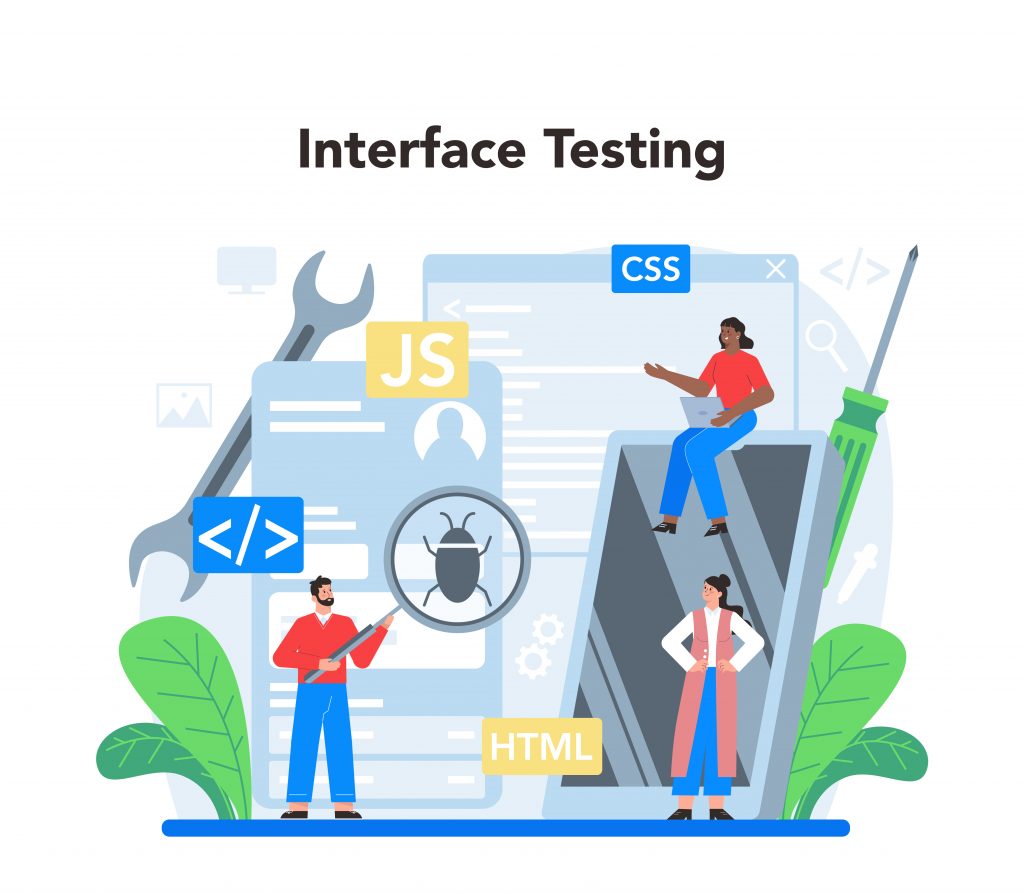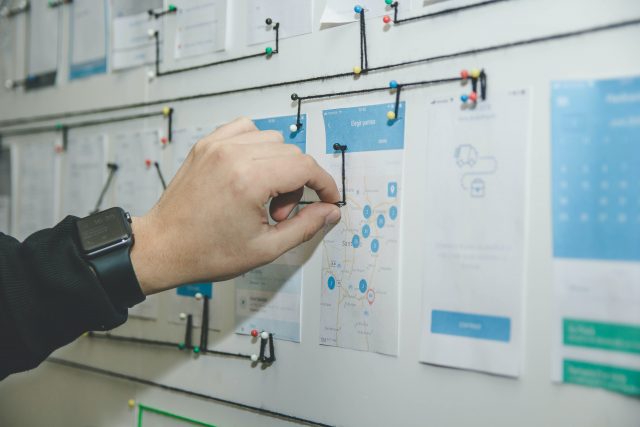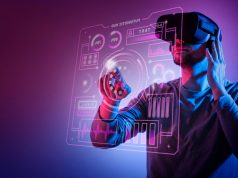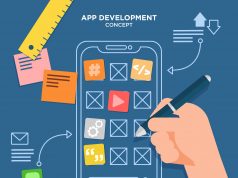In today’s digital landscape, UI/UX design workflows serve as the structured framework guiding successful design companies in the USA toward creating exceptional user experiences. These meticulously planned processes encapsulate the entire design journey, from conceptualization to the final product, ensuring that the end result is not only aesthetically pleasing but also user-focused and aligned with business goals. The essence of UI/UX design workflows lies in their user-centric approach, always prioritizing the needs and expectations of the end-users.
The Importance of User Research
User research is the bedrock upon which successful UI/UX design workflows in the USA are built. Prominent design companies understand that it’s not just about creating visually appealing interfaces; it’s about crafting experiences that genuinely connect with users. This recognition drives them to invest time and resources in comprehensive user research. Through methodologies like one-on-one interviews, in-depth surveys, and rigorous usability testing, designers gain profound insights into how users interact with digital products. This understanding of user behaviors, preferences, and pain points becomes the guiding light for the entire design journey.
These design firms view user research as an ongoing dialogue with their audience. It’s not a one-time endeavor but a continuous process that evolves as user needs change. Armed with user insights, designers can make informed decisions, aligning their creative visions with the practical needs and desires of their target users. This commitment to user research sets the stage for designs that not only look good but also function seamlessly, fostering a deeper connection between users and the digital products they interact with. In essence, user research is the compass that ensures design decisions are not based on assumptions but rooted in real-world user experiences.
The Different Stages of the UI/UX Design Process

The UI/UX design process is a systematic journey that leading design firms in the USA adhere to with unwavering precision. It consists of several distinct stages, each playing a pivotal role in shaping the final user experience.
Research and Discovery:
This initial phase revolves around understanding the project’s context, objectives, and target audience. It involves comprehensive user research, market analysis, and competitor assessments. Design companies delve deep into the project’s nuances, ensuring a solid foundation for the design process.Conceptualization:
In this stage, designers brainstorm and ideate to create a conceptual framework. They outline the project’s core functionalities, user flows, and initial wireframes. This step serves as the blueprint upon which the actual design will be built.Design Creation:
With a well-defined concept, designers move on to the creative phase. Here, they craft the visual identity of the product. It encompasses the creation of mockups, prototypes, and high-fidelity designs. The user interface (UI) and user experience (UX) are meticulously designed to align with the project’s goals.Development:
Once the designs are finalized, development teams come into play. They transform static designs into functional, interactive digital products. The code is written, databases are integrated, and the backend is developed.Testing and Quality Assurance:
Rigorous testing is a cornerstone of UI/UX design workflows. Design companies conduct thorough quality assurance (QA) to identify and rectify any issues. Usability testing, performance testing, and cross-device compatibility testing are some of the critical aspects addressed in this phase.Deployment:
After rigorous testing and refinements, the product is ready for deployment. It’s made accessible to the intended audience through various platforms, such as app stores or websites.Feedback and Iteration:
Post-launch, design firms actively seek user feedback to understand how the product performs in the real world. This feedback loop informs iterative improvements, ensuring that the product continually aligns with user needs and preferences.Maintenance and Updates:
The UI/UX design process doesn’t conclude with deployment. Ongoing maintenance and updates are essential to keep the product current and address emerging user requirements and technological advancements.
These stages, collectively, form a structured and adaptable framework that empowers design companies to deliver exceptional user experiences consistently.
The Role of Collaboration in UI/UX Design
Collaboration is the cornerstone of successful UI/UX design processes in the USA. It goes beyond designers working in isolation, extending to cross-functional teams that include developers, product managers, marketers, and, most importantly, the end-users themselves. This multidisciplinary collaboration ensures that every aspect of the design, from functionality to aesthetics, is thoroughly scrutinized and optimized.
One crucial aspect of this collaboration is interdisciplinary teamwork. Designers work closely with developers to ensure that the proposed user experiences are not just visually appealing but also technically feasible and responsive. Product managers bring market insights, user expectations, and business goals to the table, helping designers align their creative choices with broader strategies. Collaboration with marketers ensures that the design resonates with the brand’s identity and messaging, creating a consistent and memorable user journey. Incorporating end-users into the design process through surveys, feedback sessions, and usability testing is the ultimate form of user-centered collaboration, ensuring that the design remains grounded in real-world usability and user preferences.
This collaborative approach is not a one-off effort but an ongoing, iterative process. Teams engage in continuous feedback loops, refining and optimizing the design as new insights emerge. It empowers designers to experiment with innovative ideas, test hypotheses, and make data-driven adjustments. By actively involving end-users, teams ensure that the design evolves in response to changing user needs and the dynamic landscape of technology. In conclusion, the role of collaboration in UI/UX design extends far beyond mere teamwork; it’s the driving force behind user-centered, iterative, and successful design processes.
The Importance of Iteration and Testing
In the realm of UI/UX design, the process of iteration and rigorous testing stands as a cornerstone of success. It’s the systematic approach of refining and perfecting designs through repeated cycles, each driving improvements and enhancements. Here, we delve into why iteration and testing hold immense significance in the world of UI/UX design:
Enhancing User Experience (UX):
Iteration and testing go hand in hand with delivering an exceptional user experience. Initial design concepts often require fine-tuning to meet user expectations effectively. By iterating, designers can address user pain points, making navigation more intuitive and ensuring that the overall experience aligns with user preferences.Validating Design Assumptions:
Even the most well-thought-out design assumptions can sometimes miss the mark. Through iterative design, these assumptions are put to the test. Designers create prototypes, gather user feedback, and refine them based on real-world usage. This process helps in validating design decisions and ensuring that the final product resonates with users.Continuous Improvement:
Iteration is a commitment to continuous improvement. UI/UX designers don’t just stop at the first draft; they refine and optimize the design until it meets the highest standards. This ongoing refinement results in designs that are not just good but exceptional, setting the stage for greater user satisfaction and success in the market.Mitigating Risk:
Iteration serves as a risk mitigation strategy. By thoroughly testing design elements, interfaces, and functionalities at various stages, designers can identify and rectify issues early in the development process. This proactive approach minimizes the risk of major setbacks or costly fixes later on.Reducing Costly Redesigns:
Without iterative testing, designers risk investing substantial resources in a design that might ultimately fail to meet user needs or expectations. Iteration helps designers identify and address issues early, reducing the likelihood of costly redesigns further down the development pipeline.

The Latest Trends in UI/UX Design
Indeed, staying abreast of the latest trends is a pivotal aspect of success for UI/UX design companies in the USA. In this dynamic and ever-evolving field, remaining current with contemporary design trends is not just a choice but a necessity to maintain a competitive edge. Here, we’ll delve deeper into some of the prominent design trends that are currently making waves and how forward-thinking design firms incorporate them:
Neumorphism:
Neumorphism represents a novel design approach that blends elements of skeuomorphism and flat design. It emphasizes tactile realism by creating designs that appear to rise from or recede into the screen. Forward-thinking design companies recognize the appeal of neumorphism in enhancing user engagement and are integrating it thoughtfully into their projects. They understand that while this trend offers a fresh and visually appealing style, it should be used judiciously to ensure usability is not compromised.3D Elements:
The incorporation of 3D elements into UI/UX design adds depth and realism to digital interfaces. This trend is being embraced by design firms to create immersive and visually striking experiences. It’s particularly effective for products that benefit from spatial representation, such as gaming and e-commerce platforms. Forward-thinking firms leverage 3D elements to captivate users and create memorable interactions while maintaining a balance to prevent overwhelming the user.Microinteractions:
Microinteractions are small, subtle animations or responses to user actions within an interface. They enhance user engagement by providing immediate and meaningful feedback. Successful UI/UX design companies understand that these micro interactions are not just delightful but also contribute to the overall user experience. They employ them strategically to make tasks more engaging and to guide users through the interface intuitively.Dark Mode:
Dark mode is gaining widespread popularity, primarily for its visual appeal and potential to reduce eye strain, especially in low-light conditions. Leading design firms recognize the user demand for this feature and integrate it seamlessly into their designs. They understand that dark mode is not merely a design trend but also a practical feature that can enhance user comfort and extend battery life for mobile users.
Incorporating these trends requires a delicate balance. Forward-thinking design companies prioritize user needs and project goals, ensuring that trendy elements enhance the overall user experience rather than overshadow it. By adopting these trends judiciously, these firms keep their designs fresh, engaging, and aligned with the evolving expectations of users.
Top Successful UI/UX Design Companies in the USA
Certainly, let’s delve deeper into each of these influential UI/UX design companies:
GeekyAnts:
With a remarkable 15-year history, GeekyAnts has carved a niche for itself in the design and development sphere. They boast a diverse clientele, ranging from startups to Fortune 500 corporations. GeekyAnts stands out for its innovative and user-centric designs, reflecting a proven track record of success. Their expertise spans various domains, making them a versatile and reliable choice for UI/UX design projects.IDEO:
IDEO is a veteran in the global design consultancy arena, with over four decades of transformative work. Their portfolio includes designing iconic products and services, such as the Apple Mouse, Lego Mindstorms, and Starbucks coffee cups. IDEO’s legacy is built on groundbreaking innovation and human-centered design, making it a driving force in the industry.Frog Design:
Frog Design is yet another heavyweight in the global design consultancy landscape. They’ve collaborated with a diverse range of clients, including industry giants like Nike, Disney, and BMW. Frog Design’s reputation is grounded in its ability to craft exceptional and memorable user experiences across various platforms and industries.Atomic Design:
Atomic Design presents a unique methodology for designers, focusing on creating consistent and scalable designs. Renowned companies like Airbnb and IBM have embraced this approach to ensure that their user interfaces maintain a cohesive and professional appearance while remaining adaptable to evolving needs.InVision:
InVision is a pivotal player in the design world, providing a platform that empowers designers to create and share interactive prototypes. This tool has become a linchpin in the design process for companies such as Google and Spotify. InVision fosters collaboration and communication among design teams, streamlining the journey from concept to implementation.Figma:
Figma has gained substantial traction as a cloud-based design tool that facilitates real-time collaboration among designers. This feature-rich platform is favored by companies like Uber and Slack for its ability to enhance teamwork, streamline design workflows, and ensure consistency throughout the design process.
These companies stand as a testament to the diverse and innovative landscape of UI/UX design, each contributing its unique approach and expertise to shape the digital experiences of today and tomorrow.
Conclusion
In the USA, where the digital landscape is highly competitive and user expectations are ever-evolving successful UI/UX design workflows are the backbone of outstanding digital products. The emphasis on user research, collaboration, iteration, and staying updated with trends are the cornerstones of these workflows. As design firms continue to harness these strategies, we can expect more user-centered, aesthetically pleasing, and functional digital experiences that cater to the diverse needs of the modern audience.
The future of UI/UX design is exciting, with the boundaries of technology constantly expanding. From immersive augmented reality experiences to the evolving role of voice user interfaces, the landscape is ripe for innovation. Successful design companies in the USA are at the forefront of these advancements, pioneering new ways for users to interact with technology. As they continue to break new ground, the world can anticipate even more captivating, intuitive, and transformative digital experiences.
Also read:


















